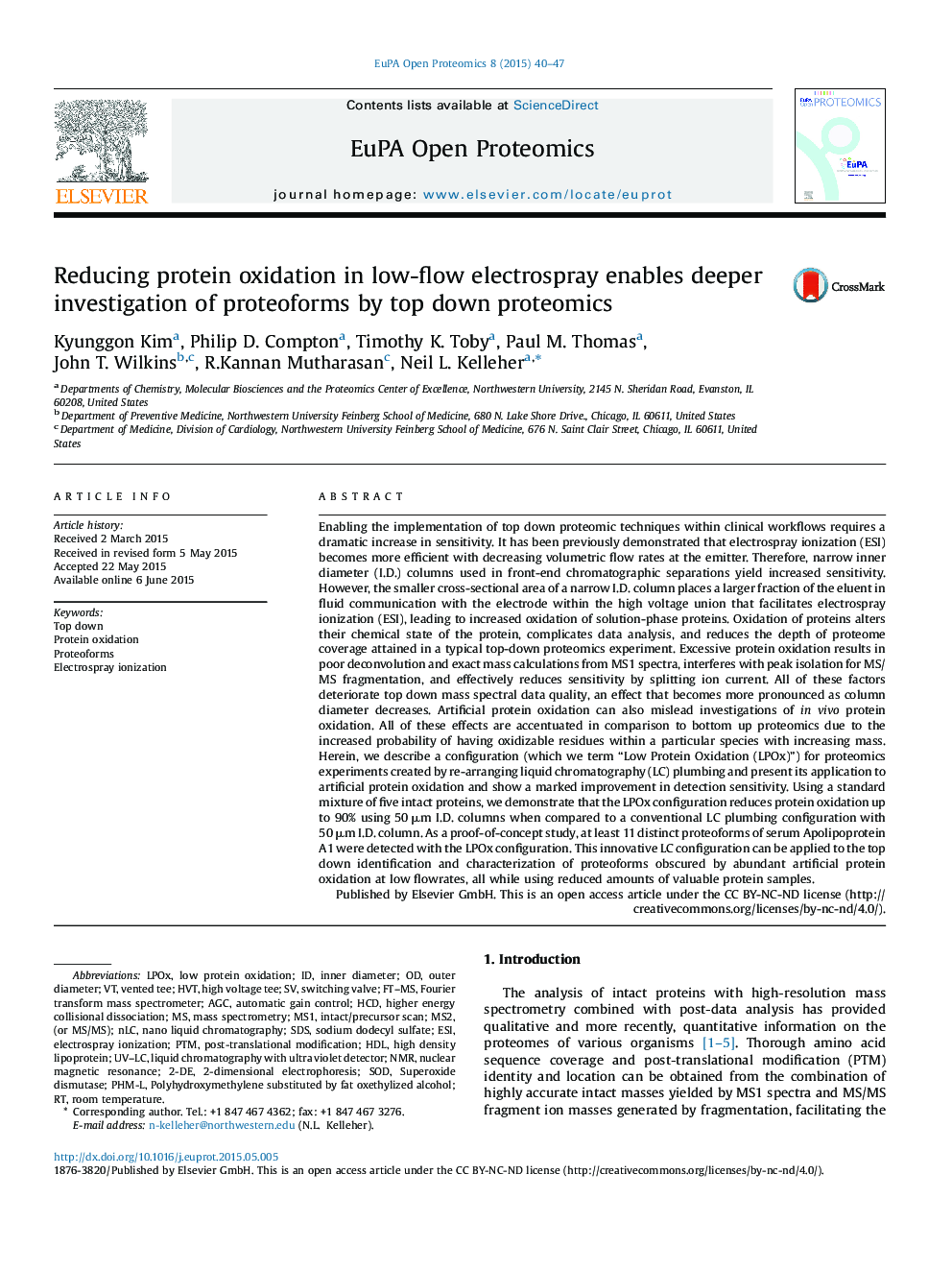| کد مقاله | کد نشریه | سال انتشار | مقاله انگلیسی | نسخه تمام متن |
|---|---|---|---|---|
| 1184439 | 1491801 | 2015 | 8 صفحه PDF | دانلود رایگان |
• Narrow ID columns yield increased sensitivity for intact protein analysis.
• Artificial protein oxidation complicates low-flow top down mass spectrometry.
• Low Protein Oxidation (LPOx) mode nanoLC reduces artificial protein oxidation.
• LPOx was applied to the characterization of ApoA1 proteoforms.
Enabling the implementation of top down proteomic techniques within clinical workflows requires a dramatic increase in sensitivity. It has been previously demonstrated that electrospray ionization (ESI) becomes more efficient with decreasing volumetric flow rates at the emitter. Therefore, narrow inner diameter (I.D.) columns used in front-end chromatographic separations yield increased sensitivity. However, the smaller cross-sectional area of a narrow I.D. column places a larger fraction of the eluent in fluid communication with the electrode within the high voltage union that facilitates electrospray ionization (ESI), leading to increased oxidation of solution-phase proteins. Oxidation of proteins alters their chemical state of the protein, complicates data analysis, and reduces the depth of proteome coverage attained in a typical top-down proteomics experiment. Excessive protein oxidation results in poor deconvolution and exact mass calculations from MS1 spectra, interferes with peak isolation for MS/MS fragmentation, and effectively reduces sensitivity by splitting ion current. All of these factors deteriorate top down mass spectral data quality, an effect that becomes more pronounced as column diameter decreases. Artificial protein oxidation can also mislead investigations of in vivo protein oxidation. All of these effects are accentuated in comparison to bottom up proteomics due to the increased probability of having oxidizable residues within a particular species with increasing mass. Herein, we describe a configuration (which we term “Low Protein Oxidation (LPOx)”) for proteomics experiments created by re-arranging liquid chromatography (LC) plumbing and present its application to artificial protein oxidation and show a marked improvement in detection sensitivity. Using a standard mixture of five intact proteins, we demonstrate that the LPOx configuration reduces protein oxidation up to 90% using 50 μm I.D. columns when compared to a conventional LC plumbing configuration with 50 μm I.D. column. As a proof-of-concept study, at least 11 distinct proteoforms of serum Apolipoprotein A1 were detected with the LPOx configuration. This innovative LC configuration can be applied to the top down identification and characterization of proteoforms obscured by abundant artificial protein oxidation at low flowrates, all while using reduced amounts of valuable protein samples.
Figure optionsDownload as PowerPoint slide
Journal: EuPA Open Proteomics - Volume 8, September 2015, Pages 40–47
